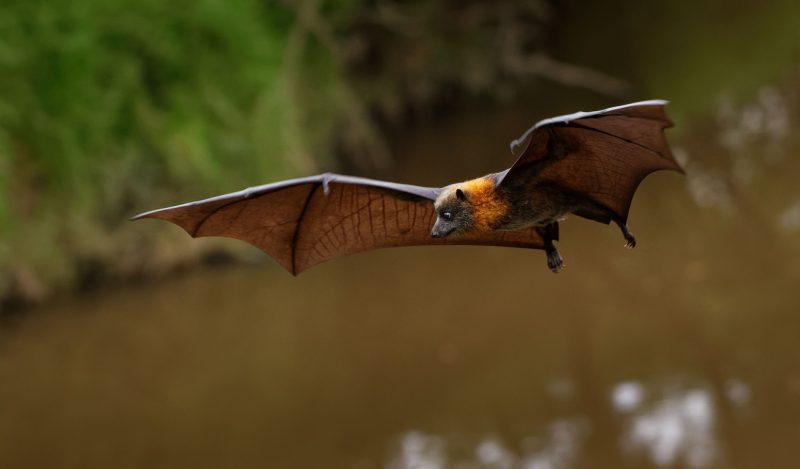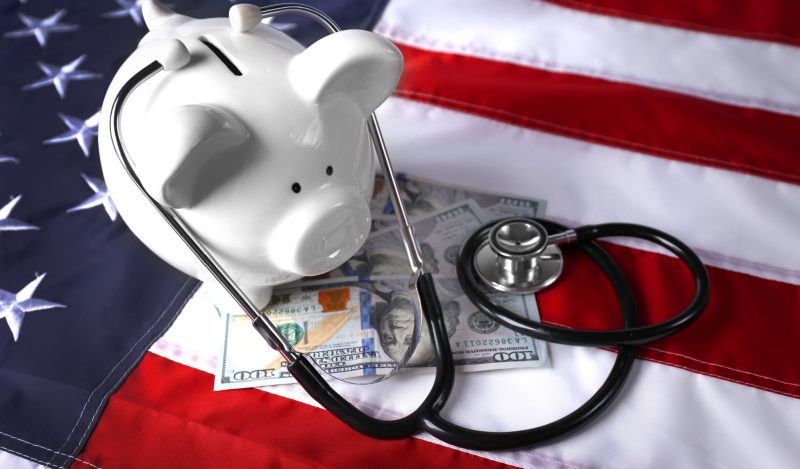Recently, Brownstone.org received communication from EcoHealth Alliance in response to my article Dr. Anthony Fauci’s Own ‘Gain-of-Function.’ Eco-Health claims the Wuhan work on bat coronaviruses didn’t meet the definition of gain-of-function and asks that we amend the article, with any such updates credited to “an EcoHealth Alliance spokesperson.”
EcoHealth Alliance’s core contention is the (potential mis-)characterization of their engagement with the Wuhan Institute of Virology (WIV) as supporting “gain-of-function” (GoF) research. However, the National Institutes of Health (NIH) own definition belies EcoHealth’s claim:
Gain of function: that which “is reasonably anticipated to create, transfer,” or use “a potential pandemic pathogen (PPP), itself “highly transmissible and likely capable of wide and uncontrollable spread in human populations” AND “likely to cause significant morbidity and/or mortality in humans…” NIH
Interestingly, in this communication, EcoHealth Alliance does not request any other specific corrections, suggesting it recognizes no substantive inaccuracies elsewhere. Removing the “gain-of-function” term seems more a plea not to be so mean to EcoHealth, a plea that many other discredited but formerly diehard pandemicists and apologists have made towards (censored and excoriated, scorned but vindicated) proponents of the lab-leak theory.
It’s worth noting that this public relations effort coincides with the recent HHS decision to suspend federal funding to the WIV for a decade due to concerns over its dangerous experiments and non-compliance. EcoHealth Alliance’s letter to Brownstone mirrors one sent to the Washington Examiner in September to distance itself from this WIV funding-suspension; however no template for shaping the narrative can reverse gain-of-function viruses once leaked (or purposefully disseminated).
Dr. Anthony Fauci’s Own “Gain-of-Function” references EcoHealth Alliance twice:
- “Dr. Fauci’s actions during the pandemic also raise questions about his involvement in gain-of-function research. Revelations from emails within NIAID and related agencies shed light on a long-term, taxpayer-funded engagement with the EcoHealth Alliance’s coronavirus gain-of-function research at WIV. This funding of offshore research, particularly in China, appears anomalous.” [It should be noted that former EcoHealth Alliance associate Dr. Andrew Huff suggests a covert dimension of US-intelligence spy-posting within WIV.]
- “Dr. Fauci’s response to the lab leak and his fervent defense of the “wet market” theory, despite its coincidental location in WIV’s Wuhan, suggests a point of vulnerability or guilt. He seemed determined to avoid any association with the worldwide virus outbreak, even if indirectly through the NGO EcoHealth Alliance’s involvement.”
Dr. Anthony Fauci’s Own “Gain-of-Function’ sourced Science’s NIH Says Grantee Failed To Report Experiment In Wuhan That Created A Bat Virus That Made Mice Sicker (October 2021) wherein
- NIH acknowledged that the EcoHealth Alliance experiments it had funded at WIV in 2018 and 2019 resulted in a coronavirus more virulent in mice.
- Science noted that EcoHealth Alliance’s failure to report this very finding represented a violation of the NIH grant’s terms’ precluding GoF.
It is therefore axiomatic that EcoHealth Alliance’s experiments fall under the definition of gain-of-function research, a point that Rutgers Professor Richard Ebright affirmed in the following Tweet he sent out with a copy of the NIH letter:
“NIH corrects untruthful assertions by NIH Director Collins and NIAID Director Fauci that NIH had not funded gain-of-function research in Wuhan. NIH states that EcoHealth Alliance violated Terms and Conditions of NIH grant AI110964.”
Communications manager for EcoHealth Alliance Robert Kessler countered this scientific consensus by explaining that “a bat coronavirus is not known to be able to infect humans.” Kessler’s claim ignores independent scientific documentation from 2005 and 2015 and even contradicts the EcoHealth CEO Peter Daszak who noted in a 2018 article that he (and China’s renowned “Bat Woman” Zheng-Li Shi) had found serological evidence of bat infections in humans. Moreover, claiming that modifying a non-transmissible virus to make it moderately or highly transmissible isn’t ‘gain of function’ research simply because the original virus was ostensibly harmless is analogous to arguing that one isn’t truly manufacturing explosives if the initial materials, like fertilizer, aren’t inherently explosive.
EcoHealth attempted to put genomic distance between its sponsored bat coronaviruses and SARS-CoV-2, echoing sentiments expressed by NIH’s Dr. Francis Collins. The Alliance highlighted the grant’s reporting requirement deficiencies — later corroborated by the HHS’ Office of the Inspector General’s 2023 report, which indicated that ‘NIH did not effectively monitor or take timely action to address EcoHealth’s compliance with some requirements.‘
The Intercept, in September 2021, broadening its lens to consider expert opinions beyond governmental stances consulted 11 virologists and similar experts:
- Seven believed that EcoHealth Alliance’s research aligned with NIH’s definition of gain-of-function.
- Columbia professor Vincent Racaniello (in the majority) felt that the EcoHealth Alliance experiment fit the GoF category but wasn’t necessarily problematic in its design — albeit hedging unforeseen consequences.
- Spokesperson Elizabeth Deatrick reiterated that NIH had assessed EcoHealth Alliance’s proposal and hadn’t seen the need to restrict it by either of their two erstwhile standards.
All but two of the scientists interviewed raised concerns about the safety and oversight of this type of federally funded GoF research. Jacques van Helden clarified:
“The real question is whether … research has the potential to create or facilitate the selection of viruses that might infect humans. The experiments described in the (EcoHealth Alliance) proposal clearly do have that potential.“
Crucially, the WIVI-coronavirus cluster — studied by co-authors Drs. Vineet Menachery, Ralph Baric, and Zhengli-Li Shi — demonstrated potential human infectivity. (See their reports written under the aegis and grant-funding of EcoHealth Alliance in 2015 and 2016). Menachery, Baric, and Zhengli’s research efforts were significantly influenced by the events of 2003, which demonstrated the potential for such viruses to become human pathogens.
The collaboration between EcoHealth Alliance’s CEO Daszak and Zhengli-Li Shi began in 2004 and spanned 16 years of coronavirus research. They jointly led expeditions to caves teeming with bats (collecting over 500 novel coronaviruses, including approximately 50 related to SARS or MERS) — activities they would not have undertaken without the events of 2003 showing that such bat coronaviruses had the potential to become human pathogens.
Daszak and Zhengli’s collaborative efforts extended to gain-of-function research aimed at making coronaviruses more infectious in humans. Notably, according to the House’s “Origins of Covid 19” report, “the vast majority of the most relevant scientific publications that have emerged from the WIV regarding coronaviruses was conducted with funding provided by Peter Daszak through EcoHealth Alliance.” His protégée, Zhengli-Li Shi, remains the most likely source of the SARS CoV-2 leak (despite Daszak’s self-exculpatory defenses of both Zhengli Shi and the “wet market” theory).
COVID-19 left a far more profound mark on the world than the original SARS outbreak. The critical factor in assessing a virus’ threat is its potential to spark a pandemic. It’s not merely about how ‘virulent’ a virus is in terms of individual harm; rather, it hinges on the delicate balance between its strength and transmissibility.
A virus that is too weak may not raise concern, while one that is immensely lethal but doesn’t easily transmit will have a fleeting impact. In the middle ground, we find pandemics like the Spanish flu and COVID-19, where this delicate equilibrium can determine the fate of nations. Certainly that which was transmitted from EcoHealth-associated Wuhan satisfied the NIH definition of PPP/GoF as both:
- highly transmissible and capable of wide and uncontrollable spread in human populations; and
- highly virulent and likely to cause significant morbidity and/or mortality in humans.
EcoHealth Alliance’s original mission was to study ecological aspects of health through determining evidence of human infection by bat SARS-like viruses. In 2018, EcoHealth conducted a serological surveillance study near bat colonies in rural Yunnan China, revealing evidence of human infection by bat SARS-like viruses. Daszak emphasized at that time, “This doesn’t necessarily indicated a brewing outbreak…It does, however, quite clearly show the value of continued biosurveillance…If we know what viruses are out there in wildlife, and which people are getting infected, we have a chance to stop pandemics dead in their tracks.”
What happened between 2018, when Daszak’s team found that bats had infected humans with SARS-like viruses, but it didn’t necessarily mean there was a ‘brewing outbreak,’ and 2019 when SARS-CoV-2 began to circulate widely among humans? The answer to that question appears to be gain-of-function research.
Daszak, early in the pandemic using classic “The best defense is a good offense” -strategy, deflected from his own complicity with “Ignore the conspiracy theories: scientists know Covid-19 wasn’t created in a lab,” adding a touch of maudlin, misplaced, and ironic “EcoHealth-” quasi-environmentalism: “If we allow myths and rumors to set our pandemic prevention agenda, we miss, quite literally, the forest for the trees.” His attempts to overload public discourse with this narrative, all the while being entangled in the very circumstances he sought to downplay, are redolent of this 2021 Late Night interchange:
Stephen Colbert: Do you mean perhaps there’s a chance that this was created in a lab?
Jon Stewart: A chance? Oh, my God! There’s a novel respiratory coronavirus overtaking Wuhan, China. What do we do? Oh, you know who we could ask? The Wuhan Novel Respiratory Coronavirus Lab. And then the actual scientists are, like, ‘Ooooh, a pangolin kissed a turtle! Maybe a bat flew into the cloaca of a turkey and sneezed into my chili and now we all have coronavirus!’. …Anthony Fauci and Francis Collins should definitely be investigated.
Daszak orchestrated the recruitment of 26 prominent scientists (falsely) to counter claims of a potential lab leak in the now infamous Lancet letter of February 2020: attacking “conspiracy theories (sic) suggesting that Covid-19 does not have a natural origin“– and then covered his tracks, suggesting that the letter should not be identifiable as coming from any one organization or person.
Interestingly, Daszak had previously issued warnings about the risks of a global pandemic resulting from a laboratory incident, particularly with virus manipulation research like that conducted in Wuhan. In October 2015, he co-authored an article in the journal Nature on the “Spillover and pandemic properties of viruses,” which identified the risk from “virus exposure in laboratory settings” and “wild animals housed in laboratories.” Seven months earlier, Daszak had spoken on “spillover potential” from “genetic and experimental studies.”
EcoHealth Alliance CEO Peter Daszak’s willingness to discuss laboratory-related risks before the pandemic contrasts with his emphasis on “natural origins” afterward raises questions of transparency and intent. As I mentioned at the beginning of this article, EcoHealth Alliance contacted Brownstone because of my piece, Dr. Fauci’s Own ‘Gain of Function.’ As with the Dr. Fauci story, one man’s “gain-of-function” tends to come at the price of “loss-of-function” for so many more.
Daszak, virology research impresario, facilitated the exchange of funds, viruses, and research information, ensuring that virus discoveries made by a global network of collaborators could be brought to the United States. The precise origin of SARS-CoV-2 remains uncertain, but there are suggestions that it may have undergone deliberate modifications involving numerous potentially hazardous components, possibly originating from various laboratories.
EcoHealth Alliance evolved over the years, shifting from its original mission of studying the ecological aspects of health to becoming a prominent player in the world of virology research. While initially focused on understanding zoonotic diseases and their connection to human health, it later became a conduit for substantial grants, particularly in the field of viral gain-of-function research.
This transformation raises questions about whether the organization, in its pursuit of funding and scientific curiosity, ended up creating controlled environments within laboratories that potentially posed risks to both human health and the environment it originally aimed to protect.
In conclusion, as Jon Stewart humorously prefaced his earlier Wuhan comments, “I think we owe a great debt of gratitude to science. Science has, in many ways, helped ease the suffering of this pandemic which was more than likely caused by science.”
This sentiment reflects the complex journey of EcoHealth Alliance, founded with a mission to integrate ecology and health sciences, yet subsequently entangled in gain-of-function research that may have contributed to the very crisis it aimed to prevent. EcoHealth Alliance no doubt with its letter aims to prevent finding itself in the same predicament as its erstwhile partner WIV, suspended ten years from HHS’ taxpayer-funded grants.
Published under a Creative Commons Attribution 4.0 International License
For reprints, please set the canonical link back to the original Brownstone Institute Article and Author.









